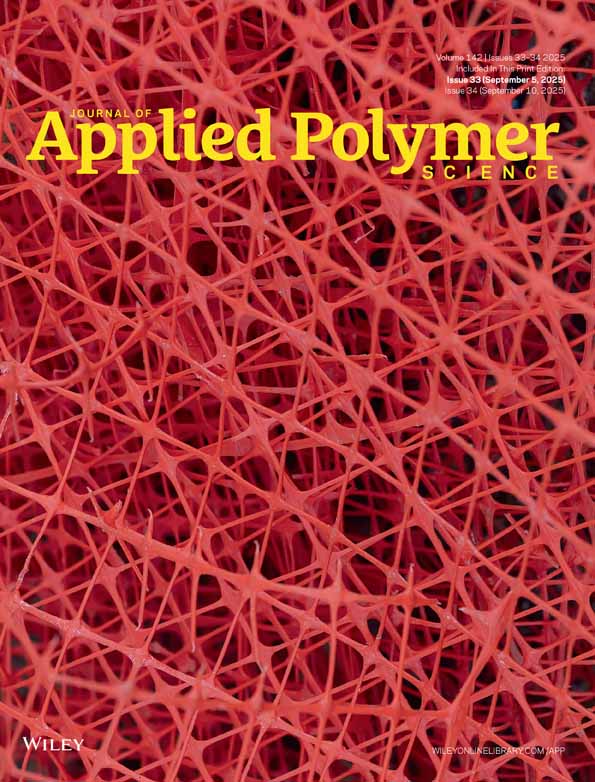Synthesis of high-molecular weight poly(trimethylene terephthalate) catalyzed by MoO3 supported Al2O3-TiO2 catalysts
Abstract
Poly(trimethylene terephthalate) (PTT) is an excellent fiber materials. Although it was synthesized as early as 1940s, obtaining high-molecular weight PTT suitable for spinning is not easy due to no evident breakthrough in the catalysts for PTT synthesis. Patents and literatures disclosed a lot of the catalysts of preparing PTT, but which are more or less disadvantageous. Based on acid catalytic mechanism of PTT preparation, a series of solid acid as x% MoO3/(50% Al2O3 − 50% TiO2) (briefly written as xM/(A − T), x = 0, 10, 15, 20 by weight) were prepared by sol–gel coprecipitation and wetting impregnation methods, and first used for PTT synthesis in this work. When 50% Al2O3 − 50% TiO2 (briefly written as A − T) was supported by MoO3 using wetting impregnation technique of (NH4)6Mo7O24.4H2O aqueous solution, a lot of Brφnsted acid and Lewis acid sites were formed on xM/(A − T) catalyst surfaces, which was confirmed by the characteristics of their NH3-TPD (temperature programmed desorption). All the prepared catalysts were highly active ones toward synthesis of PTT. PTT with high-intrinsic viscosity (IV) was obtained in the presence of trace amount of the catalysts. IV ranging of the PTT synthesized from 0.66 to 0.95 dL g−1 corresponds to weight average molecular weight
 from 49,197 to 73,004. © 2009 Wiley Periodicals, Inc. J Appl Polym Sci, 2010
from 49,197 to 73,004. © 2009 Wiley Periodicals, Inc. J Appl Polym Sci, 2010




